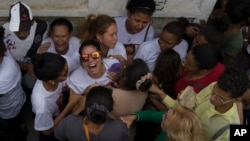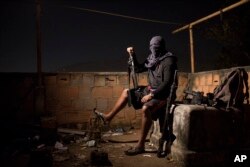The homicide rate in Rio de Janeiro climbed by 20 percent in 2016 from the previous year, as violence soared in the Brazilian metropolis amid rising unemployment and sharp cuts in public security budgets as the country struggles through a recession.
According to state security statistics released on Wednesday, 5,033 people were murdered in Rio during the year, up from 4,200 in 2015.
The figures confirm growing concerns in Rio, a city and surrounding state home to more than 16 million people, that hard-won gains in security over the past decade are quickly backsliding along with Brazil's economy, now in its worst recession on record.
Despite a massive deployment of more than 80,000 soldiers and police officers who ensured public order when the city hosted the Olympic Games in August, Rio and its suburbs suffered from an increase in violence throughout much of the rest of the year.
Gangs return after Olympics end
The increase in violence, according to the figures, was particularly sharp in the so-called Baixada Fluminense, a dense sprawl of blue-collar suburbs inland from central Rio and home to much of the city's workforce.
Meanwhile, residents of central Rio continue to worry about growing violence in the many slums that dot the city.
Many of those areas, where police had successfully displaced some criminal gangs in the lead-up to the Olympics and the 2014 World Cup, are now roiled by efforts by gangs to retake turf and regain access to markets for illegal drugs.
Funding for security cut
Rio is one of several Brazilian states suffering from gaping budget deficits. The state government, which has struggled to pay police, doctors and teachers in recent months, slashed its overall security financing by more than a third in 2016.
As tensions with suspected criminals increased, the number of civilian deaths resulting from conflicts with police last year rose 42 percent to 920.
Rio police, who are frequently criticized by human rights groups because of well-documented abuses and excessive use of force, also suffered an increase in deaths, with 40 officers killed during the year, up from 26 in 2015.









